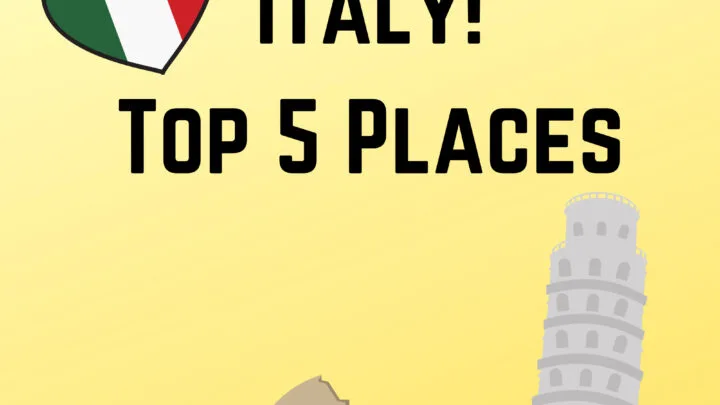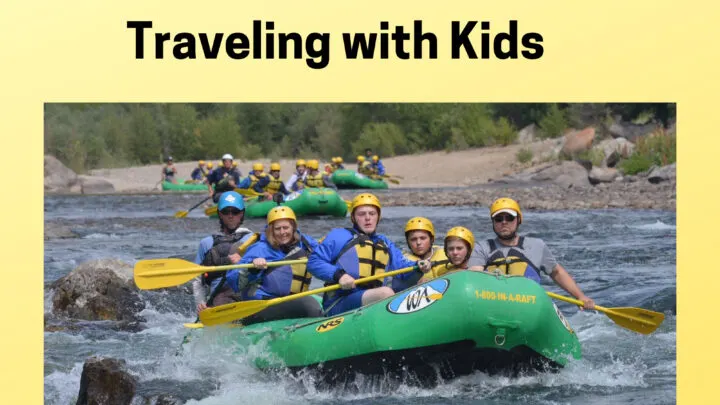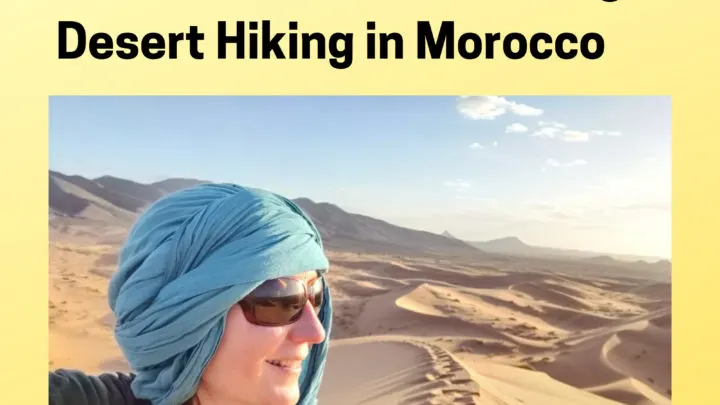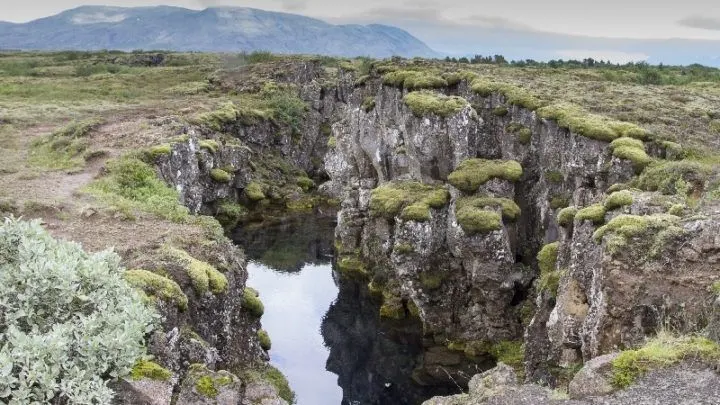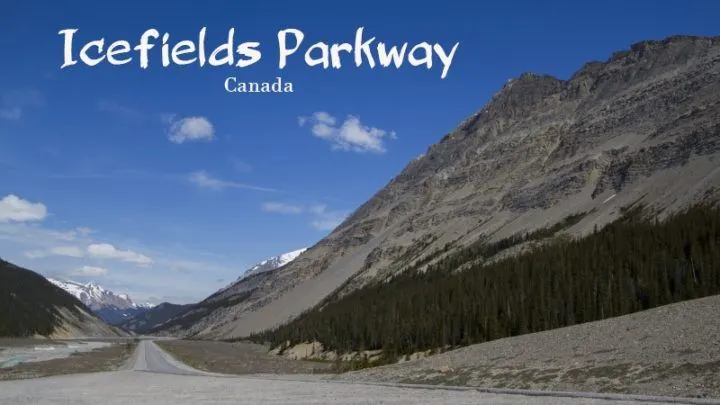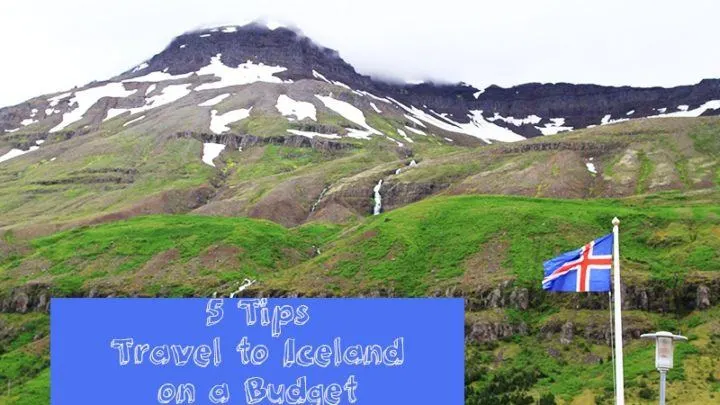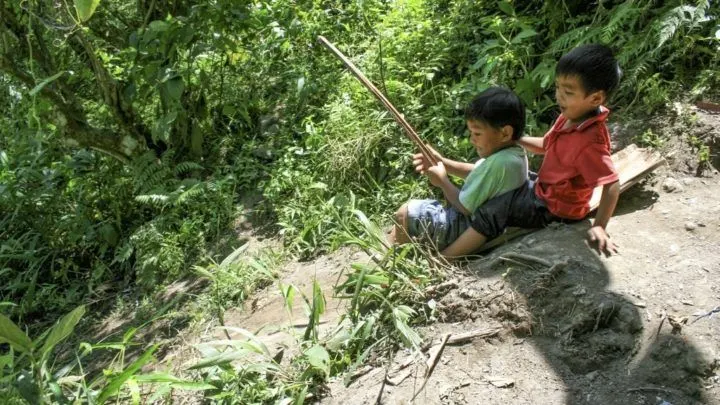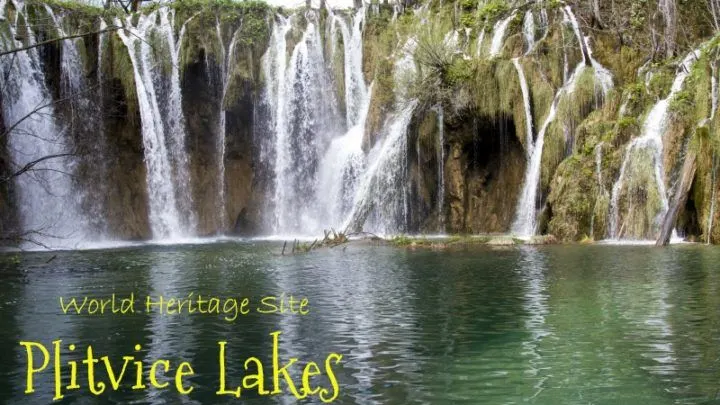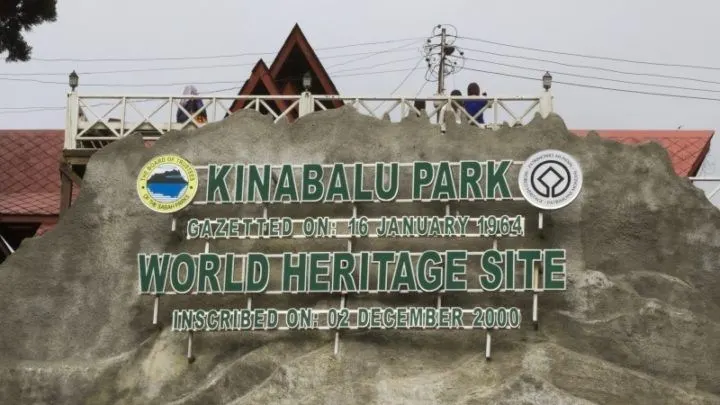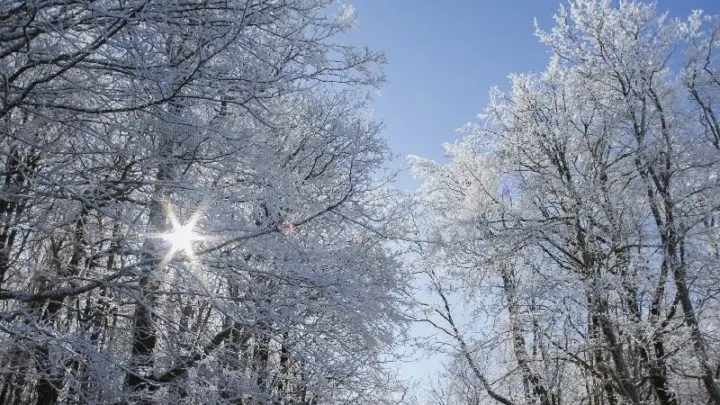In this podcast, we talk with a couple of avid hikers, Morgan and Sage. They enlighten us about an enjoyable way to see the amazing Alps of Italy, the Dolomites.
Or you can always subscribe to one of these:
Apple Podcasts
Google Podcasts
Spotify
Amazon Music
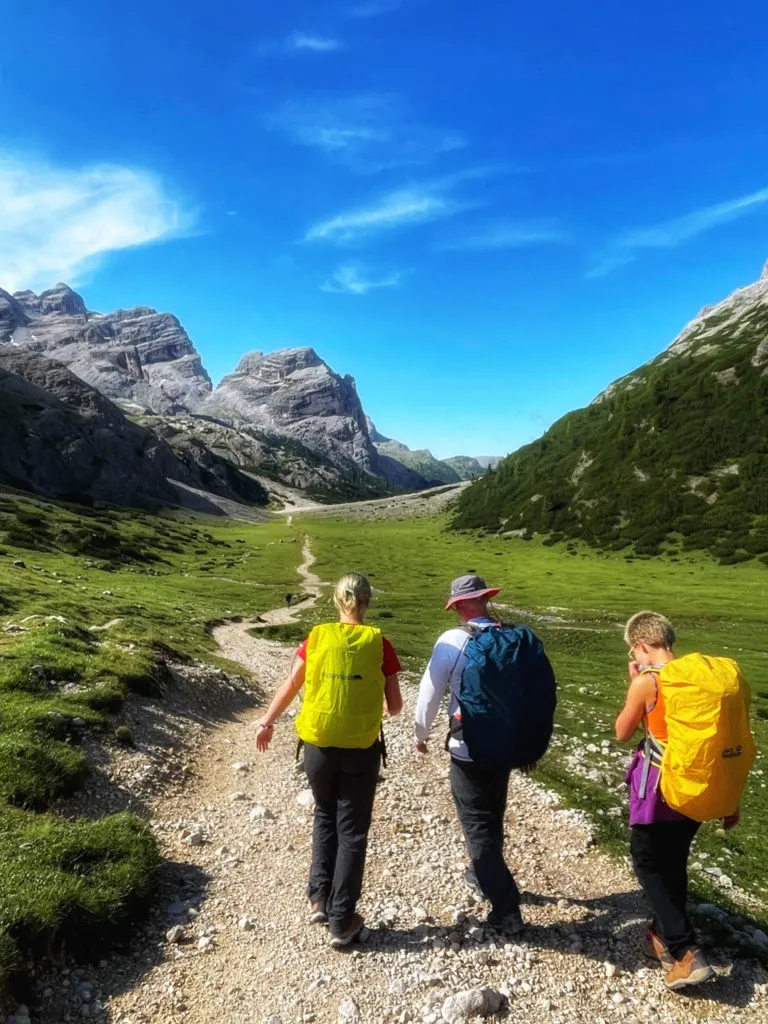
Chatting with Morgan and Sage was so much fun. I found myself the whole time experiencing some FOMO since I hadn’t heard about hiking the Dolomites hut to hut. Of course, if I had maybe I didn’t know that the best times were playing cards after the amazing dinners that the hosts served. It sounds like something I would love doing. I mean who doesn’t love spectacular mountain vistas, deep blue lakes, views for miles, then great food and wine?
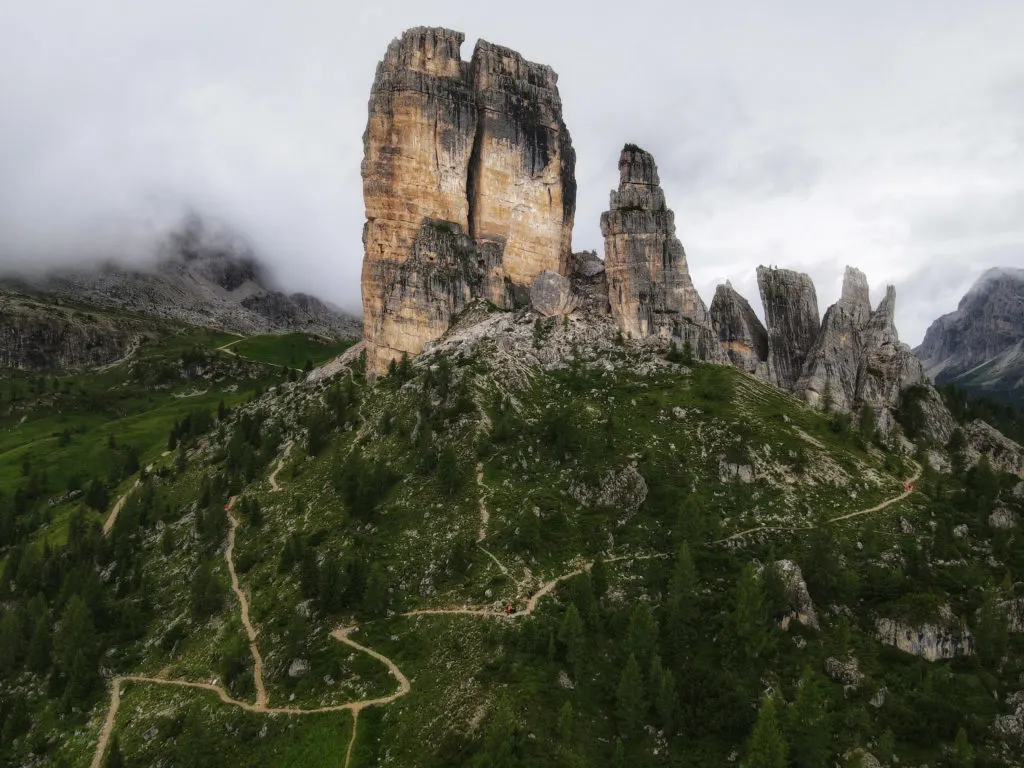
Show Notes
1:04 – Finding out about Hut to Hut Hiking
4:46 – A bonding experience
8:24 – Planning a hut to hut hike
11:51 – What to do in case of emergencies
18:09 – Alta Via One hut descriptions
23:47 – Making friends while walking the Dolomites
28:37 – Food options in the huts
35:29 – Alpine cows
44:42 – Practicalities of the hike
48:22 – The lake club
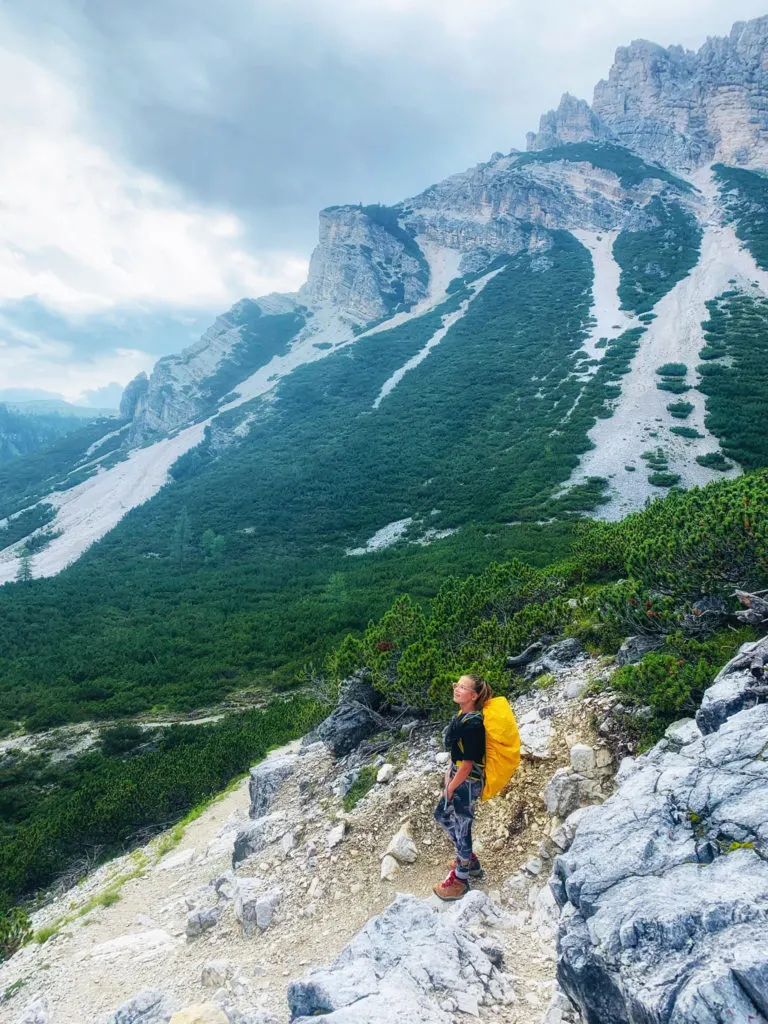
Does this make it on our Top 5 Places to Visit in Italy? (podcast)
Other inspiring interviews with intrepid travelers:
Guinness World Record Climbers – Iain and Adam
Judging Tiramisu with Christina and Cynthia
Phoebe Thomas’ Amazing Travel Stories
Thoughtful Travel with Amanda Kendle
Coritta Travels with her Family
Jennifer Lloyd Talks about Travel to Volunteer for Animals
Morocco Desert Hiking with Eva
Kirsten Discusses Travel with Kids
Mary Jo tell us about her book – Secret in Seattle
Marissa tells us about finding her Irish Ancestors
Worth Mentioning
Check out Morgan’s website where she helps you plan out a Dolomite hike.
Bolzano, the Dolomites, and Visiting Oetzi
Other Italy Podcasts and Articles:
Our Top Five Places to Go in Italy (podcast)
Best Things to do in Lucca
Best Tiramisu Recipe
A Visit to San Marino and Its Castle
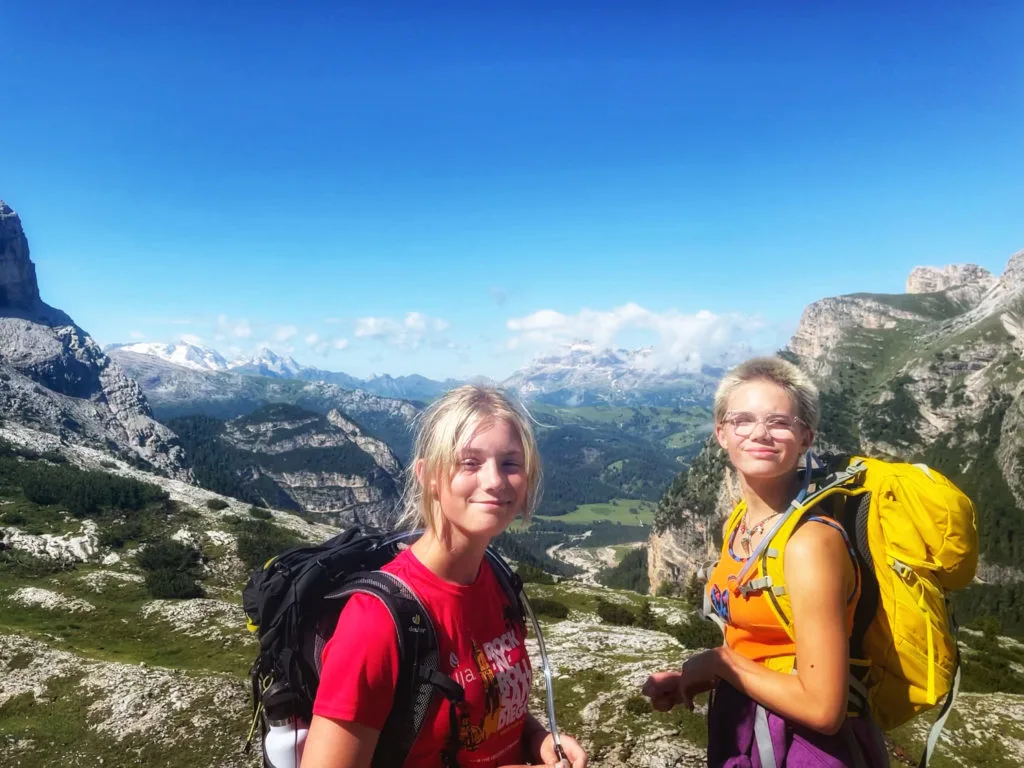
Join Our Community
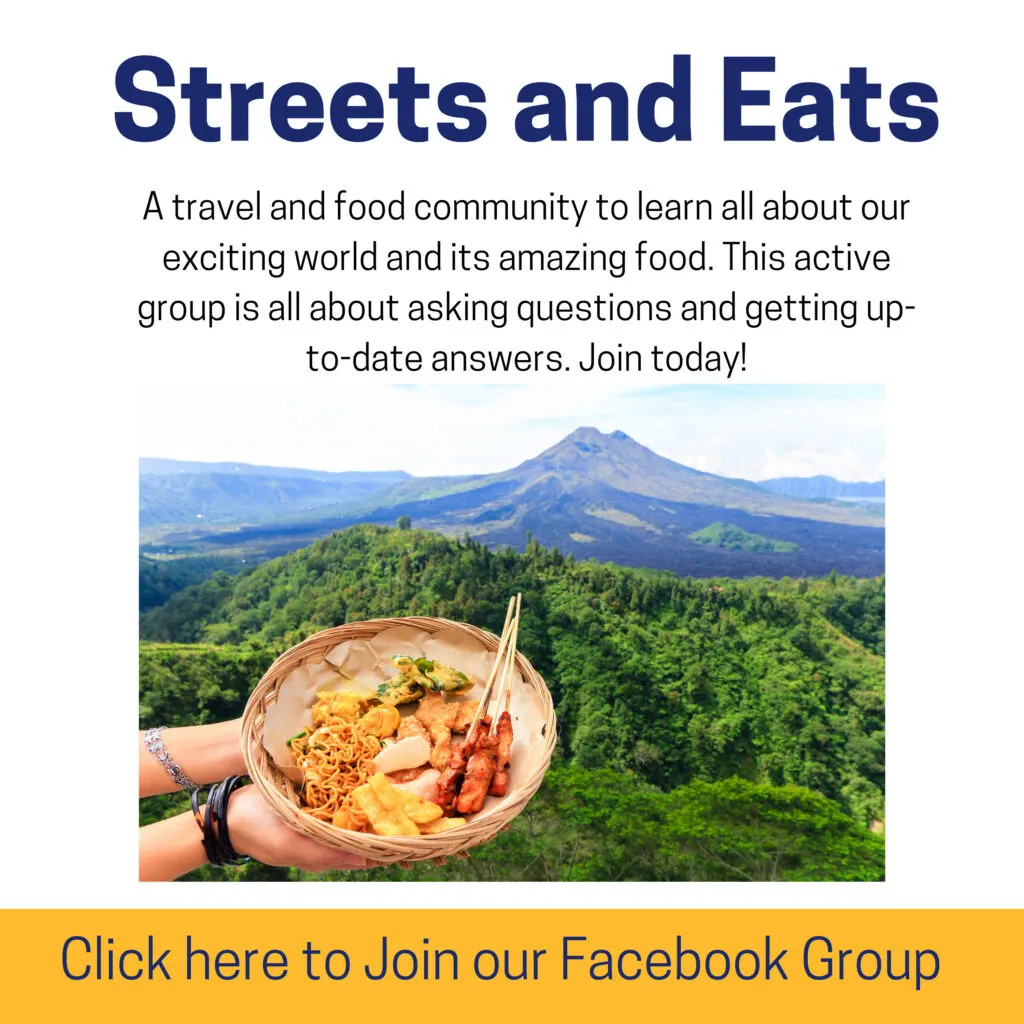
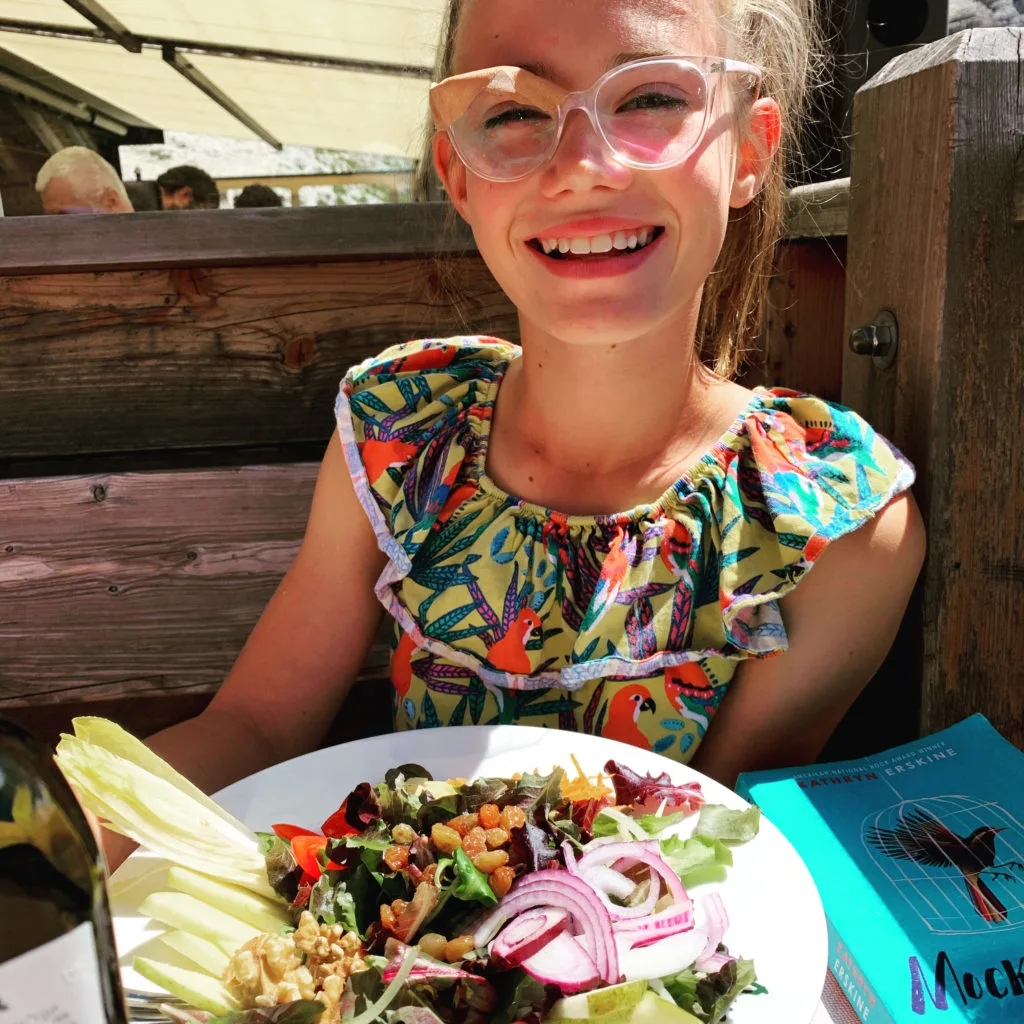
If you enjoyed Hike the Dolomites
Full Transcript of Podcast
Jim 0:00
Okay, welcome back everybody to Streets and Eats. Today we’ve got Morgan Fielder and her daughter Sage. They have found their passion hiking hut to hut in the Alps and around the Mediterranean. And we’re just going to pick their brains and find out how to get into that sort of thing and what kind of adventures we can find along the way…
Corinne 0:20
…and what kinds of great food they’ve eaten.
Jim 0:23
Welcome to Streets and Eats the travel and food podcast dedicated to taking our listeners to the sights, sounds and flavors of fascinating places near and far, both on and off the beaten path. We’re Jim and Corinne Vail and we’ve been traveling internationally and domestically together for decades, visiting more than 90 countries and all 50 states of the USA, we’ll share all of the local knowledge and food expertise we’ve gathered through years of living as expats in Asia and Europe, as well as traveling with family spanning multiple generations around the world. Join us each week for a new adventure.
So welcome, Morgan, and welcome, Sage, I guess to get started, you know, when did you first find out about this hut hiking? I don’t think everybody knows about that sort of thing.
Morgan 1:04
You want to tell the story?
Sage 1:06
I have no idea what the story is. Oh, yes, it’s Frau Russell, my elementary teacher. She was the best teacher ever. She was super nice. But she told my mom about hiking in Italy, like hut to hut with the wine and like beautiful views. You were really interested. When did she tell you at the meeting? Fair? Right. And I was in second grade.
Morgan 1:37
Yeah, I didn’t speak very much German. And she doesn’t speak very much English. But it definitely got across that you can do this amazing experience. And she was probably in her 60s. And it was, you know, to me, I grew up in Idaho. And you know, that American style of like, you know, when you go hiking, it’s hard. And it’s taxing and gritty.
And she’s telling the story about how you, you get to the top and then you walk along the top for you know, 10 or 15 kilometers a day. And every time you don’t have to carry a lot of stuff, because you stay in this beautiful hut on the top of the mountain that makes you like, three course dinners, and they have beds there. And they make breakfast in the morning. And you just have to carry a little bit of stuff. And then you go to the next one. And then the next one. And yeah, that got my attention quick.
Corinne 2:30
I was gonna say that sounds like my kind of hiking.
Morgan 2:34
Yeah, it’s accessible. But I couldn’t figure it out. I, you know, we just had some other trips planned, because we were going back to United States for summer break or whatnot. And I had called a few places that were like tour agents for it, but they wanted six or seven hundred euros, just to give me the plan. And I thought holy cow, that’s, that’s a lot. Plus, you know, you have to pay for the hut, and the food or whatnot. So I finally figured out how to, like where it started, like some of the popular ones, and then went down the blogosphere, and just kind of eventually figured it out. And we went in 2020 for the first time.
Sage 3:24
Yeah. So like, a few years to get it.
Jim 3:26
Sounds like it took a while.
Corinne 3:30
Well, I mean, the thing is, we we’ve been to the Dolomites, we think they are some of the most stunning mountains on this earth. And I kind of feel like we missed out because we did road tripping, and we got fantastic photos, and we ate fantastic food, because we found lots of good places, but I think the idea of going head to head would be really, really wonderful. Something we’d be definitely into. So darn. Doesn’t mean we won’t go back though.
Morgan 3:59
Definitely go back. It’s amazing. Yeah, there’s something about like, there’s a sense of purpose each day. And granted, you know, it’s not like the most difficult thing in the world, but it is challenging. So when you do get to the hut at night, like the food just tastes so much better. You know that that bed is so much more comfortable and you know, you go with friends usually or you make friends with other people along the path because you generally start at the same place and everyone kind of generally walks in the same direction. So you get into these great conversations and you meet all kinds of people from all over the world. And you know, it definitely helps that they have good wine up there and really good hot chocolate with fresh whipped cream. Right.
Corinne 4:43
So what is your favorite thing about it Sage?
Sage 4:46
Um, well, I think my mom and I bonded when we were hiking it. The first time we went we were alone. Just you and I and the second time we went with friends. The first time I feel like we bonded and talked, and we had like a really great time. Second time was more hectic because there were so many people. But I just think that you can make a lot of like, really cool relationships when you go and when you’re hiking together. And you’re just like going to the challenges together, you kind of like, create a really cool relationship.
Corinne 5:20
That’s a fantastic answer.
Jim 5:22
It’s really a bonding experience to go through something like that. Even though like you said, it’s not super challenging. You’re still out there hiking through the Alps, and spending the night in huts. And yeah, so definitely, it would be a bonding experience. That’s really cool.
Corinne 5:38
I can see it now. I mean, I’m a pretty slow hiker, Iif we all left at the same time, I’d be the one that they’re like, is she going to make it. Is she going to make it. Oh, it’s dark, is she gonna make it? I can almost hear cheering as I like stumble in at the end of the day.
Sage 5:58
That definitely happened.
Morgan 6:03
We had this one trip where my husband’s best friend from, gosh, Naval Academy prep school had just got married. And so him and his new wife came over for their honeymoon. And then, you know, some other friends came and one of my girlfriends was not eating enough, I think, and I think it was day three on the Alta Via One and she, she came stumbling in and we all cheered and hugged and, you know, there were tears. There were some tears.
Corinne 6:33
Oh, oh, that’s sweet. But, you know, we used to actually, I used to be the president of the Volksmarching club in one of the places we lived in Germany. So I, I’ve had plenty of experiences hiking in the mountains, and being in charge of all the people. So being really keen on, you know, who’s made it, you know, who we’re waiting for.
One time, we had a friend whose 70 year old mother came on a Swiss hike with us. And I asked before we went, I said, “Are there any really bad hills?” Now, I’m talking to a Swiss man and he says, “Oh, no, one little hill up and down.” Except for that little hill up was about 10 kilometers of pure climbing. And she was a 70 year old woman who had not been hiking in recent times. And it took her–I mean, we missed our departure time. I mean, it got to the point, like I was really getting worried about her. So I totally understand what it’s like waiting for that straggler. And I think that I would be that person now. But that’s okay.
It’s still like you said, it’s a bonding experience. Everybody gets into it, everybody’s rooting for you. And in our experience, doing those kinds of things, it was the same thing where you would go eat and drink with everybody afterwards. And you do get to meet people from all over.
Are you starting a business for this? I mean, people need to do it so that it’s easy, you know, like you said, it’s really hard for most people and to try and call up each hut. I was reading part of your blog and trying to call up each hut would be intimidating, I think for some people, so is it just other than the people that organize it for you, you pretty much have to do that, though yourself, right?
Morgan 8:24
And I think most people do some kind of service where they pay someone to do all that arranging for them, I just wanted to figure it out on my own. And it is, you know, I’ve made some spreadsheets to stay organized, let’s just say that, because it does require you to call. And you need to know how far you can go each day. And be reasonable about it. Because it is the Alps, it’s pretty steep in parts. So it’s it, the distances are not as far as you’d expect.
And you have to make sure that you’ve got the date, right, and then you’ve got your booking, and that you give yourself enough, you know, enough kilometers to go to till your next hut, and then book that one, and then just sort of email back and forth with Google Translate. And then sometimes try to call like, at certain times, because these are mountain huts and the service is not always that great. So it is logistically challenging.
In fact, on the year we went in 2020, I accidentally booked a hut 30 minutes walk from the next one.
Corinne 9:30
Oh, no.
Morgan 9:31
Yeah, big fail. But there was quite a lot of freedom in 2020 because of COVID. And there weren’t as many tourists and the Cinque Tori hut actually, let me because you have to put a deposit down usually six to nine months in advance, and they actually kept my deposit and rolled it over to 2021. So highly recommend that hut for sure. Because that was really cool and they didn’t have to do that.
Corinne 9:58
Well, that is good.
Jim 10:00
So about on average, how many kilometers do you plan per day?
Corinne 10:04
Like, what would you recommend for people? Because, Sage you were 11 when you first did it, right?
Sage 10:09
Was I? Or was I 12?
Morgan 10:11
You were 11.
Corinne 10:15
Were you tired at the end of the day?
Sage 10:18
Um, some days yeah, I was really tired. Some days, I still had like, a lot of energy. But how many kilometers? We do?
Morgan 10:27
We generally did between 12 to 16 kilometers. So not a terrible amount. But yeah…
Sage 10:35
It didn’t, it didn’t feel that long.
Morgan 10:38
Some days I wish they were a little bit longer, but it’s steep in parts. So the, the hiking sticks or trekking poles are really handy, you know, because I have bad knees or whatnot. So sometimes it’s really nice to have that. And, you know, we planned stops along the way, so we could actually enjoy it. Like, there’s some people who like to hike and just put their head down and go 30 miles, and that’s fine. That’s cool. That’s just not our style. So yeah,
Corinne 11:03
Mine either. I’m definitely the stopper. I might have to take about 50 pictures here. And then Oh, yeah. 10 steps and 50 pictures more.
Jim 11:13
Yeah that’s her standard plan, when she is getting tired, she stops to take photos.
Morgan 11:22
Good strategy?
Corinne 11:23
I think so. It’s been working.
So what happens? If I mean, I’m assuming that these huts have to be on roads because they have to get supplies to them. So what happens if someone gets hurt? Like you were talking about your sister in law, but she didn’t sound that hurt. She was just sort of tired. But what if you have twisted an ankle or? I don’t know. Something else where you’re done?
Morgan 11:51
Sure. Yeah. I mean, it depends certainly on the hut. So they’re usually going to have some kind of like mountain dirt road to access it. Because usually the hut owners, they’re mostly all family run businesses, and they’re, you know, dating back 30, 50, 60, 80 years. But they have a truck, like a four by four kind of truck. So you’d be able to, you know, get help from the person owning the hut. There’s a lot of like adventure sports in the Dolomites, too. So I’m sure there’s a pretty rigorous, like helicopter lift, kind of rescue situation.
Jim 12:28
Search and Rescue type thing.
Morgan 12:28
Yeah. And I mean, there’s various routes. the Alta One is the most popular, and it’s the most well serviced. So some of the huts are quite luxurious, actually. And I believe that we haven’t done it, but there are, you know, there’s the Alta Via Two, Three, and Four, and they get more and more rugged as you go along.
So I’m not really sure about the more rugged parts, but I mean, it’s the Alps. I feel like there isn’t really someplace in the Alps that’s completely overlooked as far as safety goes. People have been skiing here and hiking for millennia.
But have you been to Bolzano?
No.
Corinne 13:14
Oh, well, do you know, I would say, have you heard of Oetzi the Iceman?
Sage 13:21
Yeah, yeah. I learned about him.
Corinne 13:23
Well, the next time you’re in the area, go to Bolzano, and go to the museum for Oetzi, because it’s, it’s like a mystery in a museum. But what’s cool about it, and the reason I bring it up is because he was overlooked for many, many years, years. And he was actually murdered in the Alps.
Jim 13:45
And he was found by hikers who were hiking, doing hut to hut hiking, and happened to go across a path that was not as commonly traveled. And there had been more snow melt that year. And so they found this mummified corpse that had emerged from the ice. First, they thought it was like a recent murder because he was so well preserved. But then after doing some research, they found out, No, no, he’s a Neanderthal or post Neanderthal. Found 1000s of years ago. But that’s a really cool Museum in the area, and especially as hikers; yeah, you might really enjoy that.
Corinne 14:24
I think you’d really appreciate it. Like I said, it’s kind of like a forensics museum set up in a way that you get to go through and see all the different things they did and how they reconstructed how he was murdered. And there’s a movie in there and it’s just a very cool museum and you get to see him too. They still have him preserved and you can look in and see him. It’s way cool.
Sage: They make a bunch of references to him at school during class.
Corinne 14:51
Do they? Why is that?
Unknown Speaker 14:54
Like a class mascot in like, history and biology.
Corinne 15:00
Well, I think he’s well worth being a mascot. It’s a pretty cool story. Am I saying his name right? Oetzi, how would you say it?
Sage 15:08
Oetzi.
Corinne 15:09
Oetzi. Okay. That’s pretty close.
Morgan 15:15
This is how I feel with German. I’m like, “Oetzi?” “No, Oetzi, Oetzi.”
Corinne 15:22
But it’s like that everywhere, no matter how well you think you know the language. I can remember many times when I’m feeling very confident where I am, most times in German. I can probably speak German better than any other language. But then I would say something and like the taxi drive would turn around and say, you know, like, the same thing I said. I’m like, “Yeah, that’s what I said.” And then they’re like…
Jim 15:46
And it depends on what part of Germany are in, too. Because in western Germany in the Eiffel region near like, the Bitburg area, they don’t really have a really hard K sound. The CH and that sound isn’t, but isn’t like eek bin. It’s more like eesh bin. it’s kind of a, almost an sh sound. But then you go somewhere else in Germany, and they look at you like, “What are a redneck from the hills or something?”
Corinne 16:17
We lived in the far west and the far east. And then we lived in Frankfurt for a while too. So pretty much right in the center. So we’d been all over. When we moved from Bitburg to Rhein Main and I was looking for an apartment. They’re like, “Are you French?” Nope. Thank you. That’s better than asking me if I’m American. In my opinion, that guy at least got you thinking I’m European.
Jim 16:42
Okay. So back to the hiking? So like the hikers that found Oetzi, they were pretty much alone for most of that day. Are there times when you’re hiking with just your party? Or do you see a lot of people along the route? Well, like how many people would you see in a normal day of hiking?
Sage 17:02
Well, 2020 we didn’t see a lot of people at all. Yeah, there were barely any people around. It was really nice and quiet and peaceful. And 2021 It was pretty mellow as well, but there were definitely a lot more people compared to 2020.
Morgan 17:17
Mm hmm. Yeah, I think that the Alta Via One trail is quite popular. So it could get crowded in July and August, probably August would be really crowded, non COVID times, because that’s the vacation season. But we met a lot of mountain bikers on like touring trails, or they were doing like long tours. There were plenty of times during the day where we are walking alone. Plenty of times, yeah. Mm hmm. Which is awesome.
Jim 17:50
In the huts, what are they configured like? How many people would normally spend the night in a hut? And how many could they hold?
Sage 17:58
Well it varies because some huts are a lot bigger because they’re more popular. And what do you think the max would be like, for example, Lagazoui?
Morgan 18:09
Lagazoui, yeah, so some of the huts are stationed next to a gondola. So that can help for ski season in or it can just help for, you know, people from Venice, who had a party with all 30 grandkids in the room next to us. You know, they didn’t hike, they came up by the gondola to have a party with their family.
So that hut was amazing, but I would say the huts that are really close to the gondolas are going to attract more of the just family reunions or whatnot. But so many of the huts we stayed at were really only accessible by jeep, or by hiking. So it varies quite a lot.
Like we’re not necessarily like fancy at all, but I didn’t want to carry a sleep sack and my own towel and so that meant I chose huts that offered you know, dorm or private rooms, but they did give you the linens and towels and whatnot.
Now there are some other huts along the way that were actually a little bit more popular because they were a little cheaper and there you had to bring your sleep sack and your own towel, and maybe some of them didn’t even have running water. So there’s quite a variation.
Jim 19:26
So some of them like a small hotel type thing.
Morgan 19:30
Kind of. But I wouldn’t, not like a hotel. So it’d be definitely a mountain… look like a mountain lodge and the first floor would usually be like a boot room, like you’d go downstairs and you take off your boots, put on your slippers and then go up to your room and the rooms would be something like you know, four bed dormitory, two bedroom and one room. Sometimes eight beds in one kind of a dorm area and usually some kind of shared bathroom because wate is hard to get up in those remote locations.
Jim 20:04
Okay, so just a couple of rooms that hold multiple people.
Morgan 20:11
Yeah, yeah, I would say. Generally, they accommodate somewhere between 12 to maybe 20 or 25 people.
Corinne 20:21
Oh, so very small.
Sage 20:24
Yeah, they were like houses, big houses
Morgan 20:27
Like big house like, you know, in German style, the big houses. And that’s the other thing like you’re talking about languages like this area is contested, right? So it used to be part of Austria, and then World War One happened and it turned over to Italy. So the languages are, yeah. German, Italian and then like the local dialect.
Sage 20:48
Yeah, there was a lot of German in huts.
Morgan 20:53
Yeah, it feels very German.
Corinne 20:56
Oh, well, that’s pretty cool. I mean, we’ve been in the area. Is the state called Sudtirol? Or is that just the Austrian side?
Morgan 21:06
Yeah, I think it’s called Sud Tirol if you’re speaking to someone who’s German speaking. And then, yeah, I think that’s the most commonly referred to. I forget the name of the province. I think part of the trail is in Benito Venice County. But then the other part is, I think Trentino.
So it’s kind of funny, I guess. It just depends on where you’re at in the Dolomites. And it’s so regional, it’s crazy. Because you know how in Germany and Austria, like the sauna culture, it’s like coed, and then you can’t wear swimsuit. But then, if you’re in the Veneto part, if you happen to be in a huta or rifugio. And the Veneto part, it’s like, then you have to wear your swimsuit and you’re not allowed to go without. And so there’s always this little dance with culture.
Corinne 21:54
So both our daughters were born in Germany, and Germany is the love of our life so well, in the military system, yeah. We were there when they were born. They’re quite a bit older than you Sage. They’re in their 30s. But when they were born, we were at Bitburg. And they were born in the same hospital room. A couple of years apart. So Germany is our second home for sure. We miss it terribly, terribly.
Sage 22:30
No, I like Germany, because you can travel. I just think the people are kind of cool.
Corinne 22:40
Well, I think you know what, I can agree with that. But living in many cultures around the world, I have found that Germany, at least, you ask questions, people are friendly, that kind of thing. And they’ll get to know you. And sometimes you can make friends with them. But in other cultures, they’re, like, more friendly at the beginning, but you still can’t make friends with them any better. Because you’re just, I guess it’s kind of a weird distinction. Do you know what I mean?
Sage 23:11
Yeah, I get that. So like, Germany, is more long term. So if you make a friend, they’re like, valuable, and they’re like a real friend. And they’re, you have like a really valuable relationship. But then, for example, in America, everyone’s so friendly, but it’s when you have a friend, it’s not as valuable.
Corinne 23:32
Well, I think it’s easier to make friends perhaps to begin with, but they may not be as deep a friend. Yeah. But some are, of course, I mean, you make great friends, I’m sure. Everywhere. And that just takes time.
Jim 23:47
Well, have you met anybody hiking that you’ve made friends with or do you have that many relationship chances?
Morgan 23:57
I definitely have. But I’ve been on some long distance treks in, in Portugal, and the Camino de Santiago in Spain. And so I’m still in contact with people from both of those trips.
Sage 24:10
Yeah. Which is awesome.
Corinne 24:13
I think that’s great. And anytime you can travel and really get to know other travelers, we find that it’s it’s very easy to meet other travelers. But I also like it when you can commune with the locals. So being able to be in their house that they’ve had for generations. That’s another really cool thing, too. That’s a glimpse into a life that we Americans wouldn’t necessarily ever get to see.
Sage 24:42
Yeah, I totally agree. I just remember when we were in Sicily, and we went to Karen’s house and all her Italian friends came over. I thought it was so special that they came over and you got to see like they were dancing and drinking. It was just so much fun. It was so different from any other l culture. Like Germans would never do that, or Americans would never do that. And you see, the Italians are completely different from everyone else, or any culture. Its one of my top 10 Favorite Things.
Corinne 25:16
Wow, you know, I think you’re really getting what you’re supposed to get out of travel that really makes me happy to hear you say things like that. So I have a curiosity, Sage, what of type of career or, you know, what do you want to do when you’re finished with school? I’m curious, because you’ve got such a worldly view.
Sage 25:39
I want to go to university.
Corinne 25:42
You don’t know what to study yet?
Sage 25:44
No, I don’t know, I want to go to university probably in Berlin. She’s been to Berlin, I somehow have never been to Berlin. Because really, l’ve lived in Germany for six years. And we’ve been everywhere else in Europe, but not Berlin for some reason. But you love it. And your description of Berlin was so nice.
And I was like, that’s just perfect. And I want to go to uni in Berlin, because that would be super cool. I don’t know what I want to study, or what I want to do. But I definitely want to travel throughout my whole life. And I never want to move to America. Now, I’m older, but just because I like Europe and like the rest of the world. And I’ve only ever lived in America for four years, three years, four years?
Morgan 26:29
Yeah, we were in Korea before we went to America.
Sage 26:32
So I don’t know America, the United States, so well. And going back would be kind of weird. And then I couldn’t be in Europe, and I love Europe. And it would be so sad. Just because we wouldn’t be able to travel as much.
Corinne 26:50
Well, I have to tell you my girls went through the same thing. And in fact, my youngest the one that had the baby, she went to Texas first for university. And we were living in Korea when she was graduating from high school, after she graduate from high school. So both she and my older daughter did Hogwans (Korean English schools) for a while and sort of did University of Maryland for their first two years so that they could still live overseas because like you that’s what their love was.
But eventually they went back to the states to finish their degrees. And one of the very first days my daughter was taking a German class. And the instructor was trying to build backstory with the students. So he’s like, what products you use that might be German, and a daughter, she went “Ricolaaaa!”. Just like that, and the entire class looks at her like who is this weirdo? And they had no idea what she was referring to, of course, you know, it was like, but everybody should know what that little chant is. I mean, come on. Anyway, so I feel your pain. I can see exactly where you’re coming from.
Sage 28:09
Yeah, I’m glad well, they my mom and dad don’t want to move back to America either. And I’m really happy. A couple months, not like a year ago. I was like, Ah, I want to go back to America because of social media. I was all over social media. I was like, everyone in America they have such a good life like la la la…. And then I realized oh, wait somethings wrong. And I’m so glad we didn’t move back to America when your contract ended.
Morgan 28:34
And I’m glad to so now we have more time to hike.
Corinne 28:37
Yes. That’s right and explore Europe, which is an amazing place. I agree with. You guys are living it up. I love it. So tell me, I’ve been waiting, tell me all about the food at the huts. Like what’s been your favorite thing to eat?
Morgan 28:53
What’s it called at rifugio Atauro?
Sage 28:55
Atauro? Yeah.
Morgan 28:56
So rifugio Atauro is about 30 minutes walk above the Cinque Torri rock formation, which is a destination in and of itself. And it’s right on the trail, which is super awesome. But this rifugio, it has a gondola so it gets a lot of fresh supplies. And it’s right underneath this giant stone and it’s so beautiful. And they have this like wild herb nuts and cheese ravioli that’s hand made with like little tomatoes on top. And it’s gorgeous olive oil. And it’s a 30 year old recipe. They’ve been making it the same way for 30 years. It’s ridiculous.
Sage 29:36
It’s soo good. They give you three but that’s plenty, they’re not even that big. They’re really small but they taste so good. And Mom, did you order it? I think you ordered it and I had one and you had two and I immediately wanted to get like 15 million.
Corinne 29:56
That sounds yummy.
Morgan 29:58
Yeah, it’s a really good quality and great service, which is crazy because you’re on the top of a mountain. It just kind of blows your mind. Like we’re just not used to it and it’s not you know, I don’t know. 12 euros or something but the dish, Wow.
Sage 30:16
What was the other? The hut with the cows and all that.
Morgan 30:22
oh, Ladarella.
Sage 30:24
Yeah, at Ladarella they had like super German Austrian food for some reason. It felt like Germany when you are Austria. When you got to the hut it just looked like Austria, because of all the cows. Yeah, so the the cows are walking on the porch. Yeah. And waitresses. They’re all look, they all look German. They didn’t look like Italian waiters or waitresses.
Morgan 30:54
It is really hard to tell though.
Sage 30:56
Well, yeah. But you can tell if they have like, blonde hair and, and all of that. They were German and they would speak German. They would speak German.
Morgan 31:06
I think you really have to speak German and Italian in this in the Dolomites really need to do both.
I like their breakfast because you get to choose which kind of fresh bread you want in the morning, like you order the night before.
Corinne 31:23
What does that look like? What are your choices?
Morgan 31:26
Um, so you could do like the white like the little rolls of broetchens. Like, you could get the multigrain one or the white one. Or you could get brioche then I think just like normal bread as well. So very important. Bread is so important to life, right? Didn’t you have a whole semester like a whole semester of like grain class in second grade.
Sage 31:46
Oh, yeah, no, throughout all of elementary, I was learning about grains. Yeah, we went out to the field. And we went to look at the different types of grain and we got some and I just like ate grain.
Corinne 32:03
That’s interesting. I took a class to one of those open air museums. And what we did was we went through the whole raising the grain process, and then threshing the wheat and even pounding it, going to the mill the whole deal. And then we made the little like fried dough to eat. It was a fantastic class. And of course, it was all in German as well. Okay, that was fine. So I can see that. I mean, bread is important. And the Germans do it the best anyway, I think.
Jim 32:36
So do you typically order different items? Or do you go to a hut and what they’re serving is what you get?
Sage 32:45
Yeah, there’s choices. So dinner, they give you a full menu, like at a restaurant, but a lot less options.
Morgan 32:54
Typically, you can choose half board or full board. Meaning so the half board would be similar to like a bed and breakfast. So you’re paying for the night stay and breakfast and there’s almost always a buffet breakfast. pretty hearty and significant. And, and it depends on the hut or the rifugio.
But usually what happens is like the day hikers kind of are going off a mountain by around five or six. And then the people who are staying in the huta, who are you know, hikers, they generally sit down at either 6:30 or 7pm altogether. And they have a communal kind of like pilgrim style meeting.
So you’ll have your appetizer course, and then they’ll bring out the main course and then the dessert course. So some of the refugios would have just one option. And then but usually there’d be some kind of vegetarian option. And then the main, like the main thing, and it changes every night and you don’t really have that much choice in it.
So though, tonight we’re doing lasagna, but they’ll have that vegetarian option for people who don’t want meat. Yeah, and that’s actually the second best dish that vegetarian lasagna at Cinque Torri was ridiculous, and I’m not, I love meat, but it was amazing. I don’t know how they did it.
Sage 34:17
Yeah. And the breakfast you got to you pick the stuff at night you put a little X mark on they’ll give you like paper and like bread eggs, milk and you would kind of just pick what you want and so that we’re able to mix food. Yeah. Which was really good. Yeah, sustainably.
Morgan 34:35
Yeah, it’s better not to waste.
Sage 34:37
They didn’t have like the buffet thing. They did have the buffet, but they will bring you like the bread and the drinks. And then you get other like small side stuff up at the buffet.
Corinne 34:52
I understand. That’s a really good way to do it. It’s very sustainable, isn’t it?
Morgan 34:56
And there’s always good coffee which is very important to me.
Corinne 34:58
Mmm. Me too.,
Sage 35:01
And good hot chocolate!
Corinne 35:05
That was one of the things that really stands out on your blog. So I think that yeah, I would have to really love that as well. I mean, the whole idea.
Morgan 35:14
Yeah, there’s I mean, the dairy cows are walking around everywhere you know, so they it’s so local. I think even one of them the ladarella huta they have their own brewery. So they have their own line of beer there.
Sage 35:29
it’s pretty cool. Yeah. Oh, so the cows at the Laderella were really nice. And they were up on the porch, but they were cows. They weren’t bulls. So we went from there to the next hut, no the one before it. They were bulls there. And I didn’t think anything of it. I just went up to them because my uncle went up to them and was just like taking pictures and petting them.
And later I went alone. I went out and I was talking, petting the cows. And they were super nice. And then I went over to the bulls and one of the bulls chased me across the whole field. How long was the field? It was a really big field.
Corinne 36:14
And it feels longer with a bull is chasing you.
Sage 36:18
With its horns down it put its horns down he started chasing me because I look I just looked at it. I didn’t even get close to his face. I was looking at the baby out of the corner of my eye I saw a bull head down chasing me.
Morgan 36:31
With a bell on its neck tinkling the whole time.
Sage 36:33
Yeah, I was so scared. So I ran across the whole field. I ran back into the cabin. I was like, there’s a bull chasing me. No one and all your friends you guys didn’t even notice I was like, there’s a bull chasing me! Okay no, it was massive. It was the pack leader and it was black and scary.
Corinne 37:02
Well, it sounds scary to me. But I have to admit I definitely was just like you. I would go and talk and pet all the cows and everything that I would find along the way. So I yeah, I totally get you. It this fun and plus, I think those Austrian cows or Bavarian cows, those brown ones with the cute little ears. Oh my god. They’re the most beautiful cows, aren’t they?
Morgan 37:26
I love the long eyelashes. Oh. The mountain herbs the grasses that they’re eating. Everything’s wild. And they they actually shepherd these cows from the high elevation where these hiking trails are and then pull them down in September.
Corinne 37:45
Have been to the Almabtrieb?
Morgan 37:48
We have not been to one. They’ve pretty much stopped of the last couple years because of COVID. But we need to go.
Corinne 37:55
Yes. Well, if you look at our website, we have a few that we can recommend. And that was one of our things we love doing. And we’ve done them in Switzerland, Austria and Germany. We love, love, love them.
Jim 38:09
We never did it in Italy, but they do it in Italy. And Slovenia, too.
Corinne 38:11
They do do it in Italy as well. We didn’t quite get there. We tried one year in Slovenia, but we got rained out. Yeah. And like you said it has to be with all this Omicron and COVID it’s all got to go away probably before they really bring them back. But it is it’s a good way to commune with the local people. And typically with the places that we went there were foreigners, but not very many.
Morgan 38:41
That’s awesome. I love the celebration of the you know, the farmers and ranchers, the people producing food. And the animal and the community. Like it just makes so much sense. Like, I talked to this rancher in southeast Oregon. And it’s you know, it’s tough. It’s a very tough business, right? And asked do you guys have a party at the end of the season where everyone comes down and you celebrate the cows, and he’s like, no, no, we don’t do that.
Sage 39:10
Those poor cows, they deserve to be celebrated.
Corinne 39:13
They really do, don’t they?
Morgan 39:15
And I think it would help the producers and people to connect, you know, like, Hey, this is you know, it’s working together with the animal. It’s not just a one way street.
Jim 39:27
Exactly.
Corinne 39:29
It’s just fantastic. And like you said, I mean, the ones that we went to always had things for sale, and it brought the whole community together. And they’re just wonderful. I just I miss it so much. I highly recommend it. So will you be doing more of these hikes? I mean, okay, so you’ve done the Alta Via One. Are there other ones in other parts of the Dolomites?
Morgan 39:55
Yeah, there’s quite a few. I’m feeling more comfortable now with my planning processes, and also just like confidence, because now we’ve gone with our whole family, and even some friends, other friends as well. And like even this year, Julia came, she’s eleven, and she did it as well.
So now because sometimes it’s like, you know, your own family, your own kids, but like, what is it like with other other people, and so after this summer, this experience, like I feel a lot more comfortable. And I want to kind of develop some different places to explore as well, linking together the hutas or rifugios, but maybe not on such a common path. Researching at the moment where we’re gonna go next summer.
Corinne 40:40
So stay tuned on your blog.
Morgan 40:42
Yeah, I think we need to explore more.
Jim 40:49
I’m kind of curious because you mentioned you could go half board or full board. So like, what’s a typical cost that you would pay?
Morgan 40:57
Yeah, sure.
Sage 40:58
So it’s included right in the room? Yeah.
Morgan 41:02
For for the full board. At some of the more luxurious ones, you’d expect to pay between 70 Euros per person, maybe 80. If it’s the fancy one, it has a sauna. The more mid level ones, you would probably expect to pay 60 per night per person for full board, and that would include breakfast.
Jim 41:25
That’s pretty good.
Morgan 41:25
Yeah, especially for where what you’re getting the quality of the food that you’re getting, and the location and just the experience of it. It’s incredible. I think it’s, I can’t believe it’s that inexpensive. Yeah, I also think that might be part of why they keep it family run, and they don’t do booking.com. And they don’t have like the big, you know, like, sales or whatnot, you really do have to organize it yourself. They just want to kind of keep it moderate.
Jim 41:52
Oh, that’s really cool. Sounds like something that we’re definitely into and would love to do.
Corinne 41:56
Absolutely. Absolutely.
Sage 42:03
When are you guys planning on visiting?
Corinne 42:06
Oh, well, my sister is still a DoDDS teacher on Wiesbaden. Plus of course, we have tons of friends there. And we lived in Germany many, many, many years. But I think that I would like to go and spend my 90 days in France one time and maybe 90 days in Spain one time. And as much as I love Germany, maybe Italy, as much as I love Germany, I’m sure I would get through there quite a bit.
There’s always something to do. It’s like I said, it’s our second home sort of, but we would want to expand out. So like in Germany, we I would say we covered the country pretty well, living in all the different places that we lived. And I was even in Netherlands for a couple of years. So even in northern Germany from there, we really did. We’ve covered it.
We’d like to do the same with other countries as well. And to answer your question, I’m hoping that things open up. I was hoping 2022. But now with these new strains, I don’t know. We have to be very, very careful because my grandson is only he’s less than two. And so he can’t even have any of the vaccinations yet. So we don’t want to bring anything that might jeopardize his health. Obviously, that’s the most important thing to us right now. But we’ll be back as soon as, as soon as we can. I guarantee it.
Jim 43:25
Yeah. So we just miss it so much. We miss traveling, being in Europe, like you said, we’ve also spent quite a bit of time in Asia too. And we love Asia. So once we get to travel again, and like right now we’re spending most of our time devoted to our grandson. We do his primary child care. So once he gets back into into or once he gets into school, I should say, and we have more time we’ll be…
Corinne 43:54
And the pandemic’s over.
Jim 43:56
Yeah, hopefully it will be over by then. Fingers crossed.
Corinne 44:00
Yeah. Anyway, um, well, what about you guys? I mean, you said you’re researching some lesser known places, which I think sounds good. Obviously, you don’t mind the sparseness of the different mountain huts? As long as they have good food and a good bed at the end of the night?
Morgan 44:22
Yeah, yeah. I’m not really, the wild camping is not my jam. Although I think that it’s really cool. But if I’m going on vacation, I don’t want it to be all work, you know,
Corinne 44:33
Right. Well, I think for me, I wouldn’t mind the camping bit. It’s just the hauling bit. But yeah.
Morgan 44:40
Yeah, carrying everything on your back. So we always aim for our packs to be less than 20 pounds with water. So it’s totally doable and it doesn’t require a lot of special training, which which makes it nice because then you enjoy it a little bit more.
I had a trip planned for the Radican Alps sort of bordering Switzerland and Austria. But I had an COVID exposure, so I needed to just stay home and quarantine. So I’d like to repeat that, or what I’m researching is actually the Allgauer Alps, which are really not that popular. So there’s not a lot on the internet about it.
And they actually there’s a path called the E… It’s on the E five, which is one of these long distance paths through Europe. But it’s, I think, six days, and it starts in Oberstdorf, Germany, and it goes across Austria and then ends in I think, Murano, Italy. So, yeah, it crosses like three countries in five days. And it’s all by huts. It’s all a serviced by the mountain huts.
Corinne 46:00
OK, so what are the things, I guess the question I should have asked a long time ago is, what is the elevation? Are you dealing with any shortness of breath or anything like that? It’s not that high?
Morgan 46:10
No, no, no, no, we’re staying under. I think the highest we got was 2700 meters.
Corinne 46:18
Okay. That’s still kind of high.
Morgan 46:22
It is high. It’s definitely high. But it’s not to the point of having any oxygen problems. Yeah. No, none of that kind of stuff. We’re normal people. Yeah.
Jim 46:42
And you kind of refill your water at the huts each day. So you’re not carrying all that water wait for the whole trip?
Morgan 46:50
Absolutely not. We I carried two liters a day. And I always had leftover and I just kind of a little bit over prepared with the water situation. But yeah, you get your water in the huts every day.
Sage 47:04
And a little in the cow stations.
Morgan 47:06
And then, and then there’s there’s quite a lot of springs. So they’re sort of piped, the spring water coming out of the mountain. And there’s a trough underneath for the cows as they wander by to get a drink or you can fill up your water bottles out of it.
Corinne 47:21
Do you have to filter that water? Or can you drink it straight from the pipe?
Sage 47:25
Yes, You can drink it.
Morgan 47:30
Yeah, it doesn’t get too too hot. Once you’re up to elevation. You’re like, you know how those valleys are they get really hot in the summertime. But once you get up higher like that, it’s nice. It felt like you know, you definitely need a hat for the sun and some really good sunglasses, and sunscreen for your face. But you know, wouldn’t get it above 70. And then in the evenings it’s nice and cool. And you enjoy having a nice, cozy comforter.
Corinne 48:03
Did they have a fire or something in the hut?
Morgan 48:07
Um, I didn’t see any fireplaces did you?
Sage 48:11
I don’t think so. No they just have heaters.
Morgan 48:13
They have a lot of heaters. Yeah. Generally speaking, you know, you take a couple hours to eat dinner because the three courses and then people play cards.
Sage 48:22
Because the best part is always just playing cards. At the end of the day. It’s so much fun. Or going out and we went um, we jumped in the lake in the morning.
Morgan 48:33
There’s a lot of ice, ice cold lakes. And so if your muscles are sore, or you’re maybe a little hungover from the night before you jump in the lake and refresh yourself before breakfast.
Sage 48:44
We have the lake club. We were supposed to get T shirts but someone… Yeah, I don’t know who was supposed to make them. I have no idea butwe were supposed to get the T shirts printed for us. For the people that would get up at six in the morning and jump in the ice cold water.
Morgan 49:01
Did you do it?
Sage 49:02
Yeah, I did it twice!
Corinne 49:04
Wow.
Sage 49:07
Only cool people that would get up and do it deserve a T shirt.
Morgan 49:12
Yeah, we need to make that.
Sage 49:15
Call it Lake Club.
Morgan 49:17
Out of the 13 people that came with us this year. I think six did it seven did it.
Sage 49:23
Yeah, you and I did it because we’re gangsters.
Corinne 49:29
That’s amazing. So you had a lot of fun along the way.
Morgan 49:33
Yeah, it was. We pulled I mean we picked up some, we kept seeing the same people you know, night after night. And so some of them joined the lake club, too.
Sage 49:41
Some of them were, one of our people that came with us. She met, well we all met this dude and he was a classmate of hers from high school and they both went to high school and like somewhere in America I had no idea but she like randomly met him on the trip.
Morgan 50:00
Yeah, in the hut, crazy.
Corinne 50:02
That’s amazing.
Sage 50:04
How coincidental is that?
Corinne 50:06
Well, I have found that this is a very small world. Jim and I have run into people that you would not believe in the furthest reaches of nowhere.
Sage 50:16
Yeah. That’s why it pays to be a nice person. Right?
Corinne 50:22
It absolutely does. Well, we have had so much fun talking to you. I will direct people to your website. Is there anything else that you want people to know about you before we go, either one of you? Instagram, or…?
Morgan 50:38
Oh, yeah, well, we have Crave the Planet on Instagram, and our website Cravetheplanet.com.
And, you know, it’s really we’re just sort of starting out and trying to figure out like, it took me so long to plan this first time, the Alta Via One, which is one of the more popular ones. And again, I didn’t want to pay 600 per person just to get the plans. So I’ve been trying to document the long distance hikes that I’ve been going on or that our family has been going on. And just kind of creating like a Google map so that people could download it themselves so that they don’t have to pay 600 euros for a plan.
And then you know, just kind of spread the message that you know, you can do this sustainable and responsible travel to places that are not crowded with a million people and you’re just sort of adding to the problem. Because travel is so good. I mean, there is a carbon footprint with travel. But you can do it in a way that supports local communities. You know, old traditions, like you know, bring the cows off the mountains and Alps. And hopefully my website will help people kind of learn that this is even a thing because I don’t think most people know about it.
Jim 51:55
All right. Thanks for listening to this episode of Streets and Eats. If you liked what you heard, please show us some love. Hit the like button and leave us a review. Maybe even subscribe so you don’t miss any future podcasts. Also, we’d love it if you joined us on our Facebook private group Streets and Eats where we just have an ongoing conversation about all things travel. Ciao for now.
Podcaster Bios for Jim and Corinne: Jim and Corinne are a married couple who love everything travel. Having met and married in Germany, they’ve never stopped. Along the way, they have raised two kids, visited over 90 countries (including every country in Europe), and have plenty of stories and travel tips to share. Read more about them on our About page.

